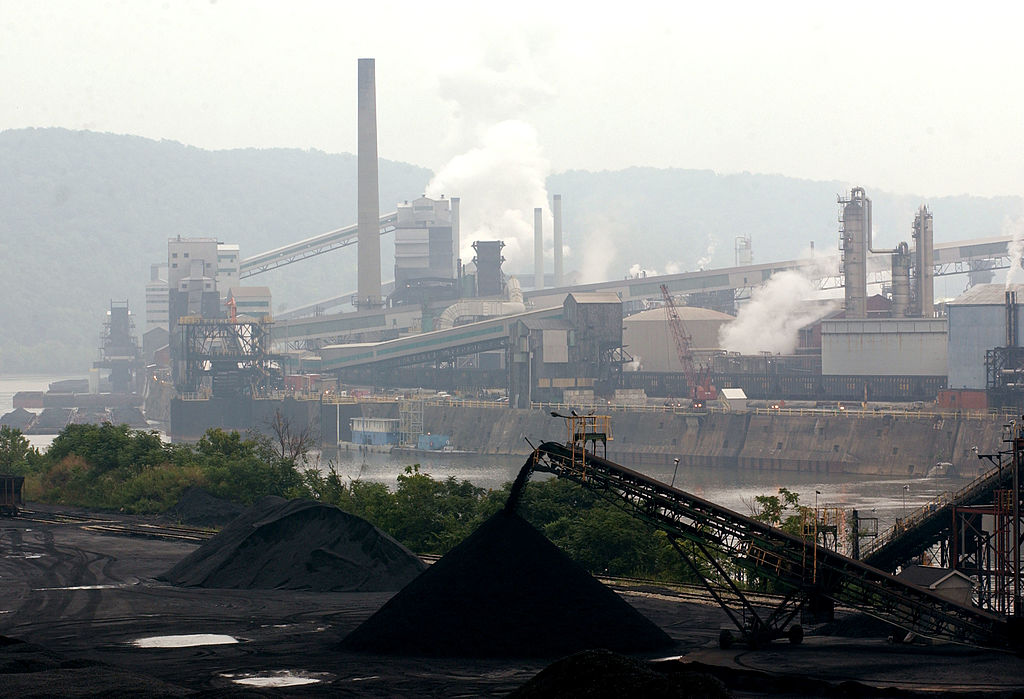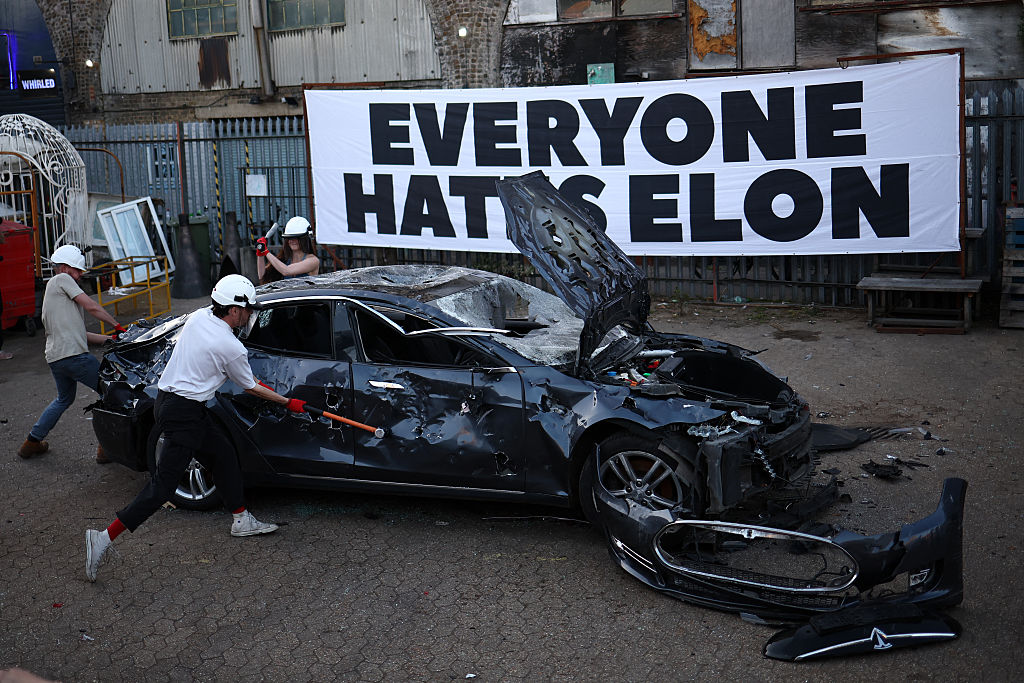The Central and Western regions of Pennsylvania are known for their majestic, untamed landscapes. Seen from on high, you’d think the forested wilderness here was yet untouched. Though that’s far from the truth, the area has, for the past few decades, for better and worse, been largely forgotten — except by the people who live, work and play among the lands and waters scarred and poisoned by abandoned deep-coal mines and unreclaimed strip mines.
The Allegheny section of the Appalachian Mountain range resembles an accordion poised in compact, scrunched-up, ready-to-perform mode. And perform these ancient mountains have: coal has been mined in Pennsylvania for more than 200 years, and according to the US Energy Information Administration (EIA), the state’s abundant coal, natural gas and refined petroleum products make PA “the second-largest net supplier of total energy to other states, after Texas.”
The EIA also reports that the Keystone State is “the second-largest coal exporter to foreign markets after West Virginia.” Which is curious. Coal, we are told, is a “dirty” form of energy, and mining it an archaic practice reminisced about now only in movies and museums and by a few old-timers.
The underreported truth, however, is that coal is key to the continuation of civilization as we know it. Apart from “providing more than 36 percent of global electricity” and accounting for “nearly one-quarter of the electricity in the United States” (per the Society for Mining, Metallurgy & Exploration), coal is necessary in the production of steel and other metals and is used in the manufacturing process of other materials city folk love, including cement. Coal is also critical in bringing about the “green, renewable” future we are told is inevitable (not to mention our first-world luxuries: smartphone batteries, fluorescent lights, computer monitors, etc.).
There are fifty critical minerals and metals in our beautiful black coal, and in the clay beneath needed to produce electric vehicles, solar panels, wind turbines, rechargeable batteries, and so forth. Sarma V. Pisupati, professor of energy and mineral engineering and director of the Center for Critical Minerals at Pennsylvania State University, explains that the United States imports more than 50 percent of forty-three of those elements from other countries, and twelve of those fifty minerals are 100 percent imported.
Such a strong reliance on foreign countries, especially China, which the German Marshall Fund of the United States reports “dominates global critical mineral supply chains, accounting for approximately 60 percent of worldwide production and 85 percent of processing capacity,” is “an urgent matter of national security,” says Pisupati.
Which is where Pennsylvania — and Penn State — come in. Data from the Pennsylvania Department of Environmental Protection (DEP) shows that “abandoned mine problem areas have been identified in forty-three of Pennsylvania’s sixty-seven counties.” Pennsylvania has some 5,000 miles worth of streams that have been polluted by acid mine drainage (AMD). In my own backyard (in Centre and Clearfield Counties), abandoned strip mines, described by our township solicitor as “lunar in nature,” are a playground for us backwoods folk. “The strippin’s” are where teenagers meet up to party under cover of steep high walls, coal refuse (or “boney”) piles and scraggly trees, side-by-side riders rip over rutted roads in packs each weekend and hillbillies sight-in their hunting rifles.
The strippin’s have been leaching AMD for decades, polluting watersheds that ooze with rusty-brown contaminants that earn them such monikers as “shit crick.” When the East Palestine train derailment happened earlier this year, many of my neighbors expressed “What about us?!” vexation — we’ve been living with polluted water for generations. In fact, there’s currently controversy a few miles from my town where a renewable energy company based in Philadelphia is proposing to construct a huge solar farm for “clean” energy on top of one of the worst unreclaimed mine sites in the region!
Yet in recent years, these “legacy coal mines,” as Pisupati calls them, have been garnering attention. Not because environmental agencies have seen the light about how important coal is, the strides the industry has made to purify the process, or because they’ve realized that re-mining is sometimes the only way to get to underground water discharges and address them, but because coal and its byproducts are a source of the critical elements necessary for a “greener” future.
“Because the old [pre-1977] coal mines were not under the new regulations, they were left abandoned, and there is a lot of water flowing through those old mines which gets oxidized, and there is a lot of acid coming out of that,” Pisupati says. “That acid actually brings out the rare earth elements and critical elements from the mines, so nature is doing some of this extraction for us. It could be viewed as a blessing in disguise, because right now we are importing these critical minerals from elsewhere.
“Acid mine drainage is flowing through those old mines and polluting our streams, so if we treat them to get these elements out, we’re actually doing a favor, and taxpayers don’t have to pay to clean these waters up if we generate money off of [the pollution]. There is work to be done, but it can be achieved so we can reduce our imports, we can make these materials right here, and we can clean up our environment.”
Pisupati calls the extraction of critical elements from AMD the “low-hanging fruit” of the clean-up process. Completely remining the area using the surface mining method, removing remaining coal from old stripping pits and deep mines, and properly reclaiming the ground is sometimes the only realistic option for solving severe AMD problems. Here in Central Pennsylvania, “there are nice bands of rare earth elements under some of the coal seams in the area,” says Dr. Barbara Arnold of Penn State, and remining the remaining coal would expose them. Digging to the clay alone would not be economical, but the removal and sale of coal makes exposing and extracting this clay a viable option.
DEP’s press secretary, Jamar Thrasher, says that remining and properly reclaiming the land in combination with treating existing AMD “would be the most effective way to address the water quality problems” in places like the Moshannon Creek watershed in my hometown. Thrasher adds that “there have been recent discussions regarding a proposal to extract rare earth elements by processing the clay that is present underneath coal seams such as the A Seam and the sludge that collects in mine drainage treatment systems,” though DEP hasn’t decided how to dispose of waste products generated.
“Waste” produced from extracting and burning coal is increasingly becoming a misnomer. That “boney,” comprised of low-quality, “junk” coal mounded together with shale, clay, and other materials discarded during the mining process, for instance, is strewn in mountains, or “spoil piles,” throughout the region, “and the fly ash associated with coal-fired power plants are a potential source of critical minerals,” reports Penn State.
At one time, this low-quality coal and boney had no use and was piled up along old mines. Mountains of it literally surround my hometown. But now boney can be used in cogeneration (“cogen”) plants to generate electricity. According to Arnold, cogen plants “use fluidized bed combustors that operate at a lower temperature to capture all the sulfur.”
As an example, Arnold points to a coal power plant in Westmoreland County.
“They take waste from a lot of the coal preparation plants in the area and combust it [for electricity production]. Now we don’t have that waste material. We have an ash. That ash can be put to beneficial use.”
Arnold says there are still CO2 emissions from burning boney, but that it’s “the best way” to clean up waste piles.
“Yes, some of the waste is combusted. But it’s actually helping to clean up the area.” Chemical & Engineering News reported in 2018 that the federal Department of Energy was “investing millions of dollars in projects to develop a potentially sustain- able domestic source from coal and coal waste products.” Prakash Joshi, manager of advanced systems technologies at Massachusetts-based Physical Sciences, told the publication that “certain types of coal have fairly high concentrations of rare earths,” though “combustion has the effect of concentrating rare earths in the ash by a factor of six to ten relative to coal.”
So if mining coal has the effect of unearthing the rare earth elements we so desperately need to combat “climate change,” and we need coal to make the cement and steel necessary to erect solar panels and wind turbines, and re-mining old abandoned mines offers the opportunity to extract even more rare earth elements while also cleaning up badly polluted lands and waters — the government should be handing out mining permits liberally, right?
“Getting remining permits is not easy,” Pisupati says.
Not only is obtaining a permit an expensive, onerous challenge, but one of the area’s few remaining coal operators likens getting a mining permit to “a criminal sentence.” It used to be that DEP inspectors would work with operators, or as a former operator puts it, “They’d tell me what we needed to do, and we’d do it.” Yet as fossil fuels, and coal in particular, are increasingly demonized, the regulatory rope tightens, unfriendly administrations impose harsh mandates, and mining coal becomes more of a complicated, extremely costly burden than the prosperity-generating industry that helped the US win back-to-back world wars.
“You can’t get nothing done with DEP breathing down your neck,” one coal operator tells me. “When you do get it done, it costs four times what it should and takes four times as long. And while green energy doesn’t work, and gets subsidized, we can’t survive without coal — and coal gets taxed like crazy!”
To mine coal, you see, you must first get that permit, which can take months, if not years. The engineering required to apply for the permit could run you in the hundreds of thousands of dollars, before you’ve dug so much as a shovel full of dirt.
Next, you invest millions in heavy equipment (a new Caterpillar 992 loader runs about $1.8 million — you’ll need a couple at each job site), fuel, wages, etc. You have payments on those machines and payroll to meet, so you hope your permit gets issued quickly!
Then the coal operator must post a performance bond, carefully calculated on each cubic yard of dirt he moves, combined with the prevailing price of diesel fuel. After the operator has removed the coal, but before he backfills, he must purchase and add hundreds of tons of limestone per acre to offset the possibility that he has exposed acidic rock that could affect nearby water quality. Meanwhile, his every move is scrutinized, and he is frequently fined by an overzealous career bureaucrat.
Then, if you happen to “touch” water associated with an old mine that predates the 1977 regulations, says Rachel Gleason, executive director of the Pennsylvania Coal Alliance, “You’re responsible for treating it for the rest of its life.”
“Meanwhile,” as an operator remarks, “it’s been making a mess for 100 years.”
Gleason points out that all active coal operations in Pennsylvania are fully bonded to the cost for DEP to reclaim them, to the tune of more than $1 billion. Despite the operators putting up — and risking — so much of their own fortunes, ESG initiatives inhibiting would-be operators’ abilities to get bank loans, and the fact that operators must have a proven track record to be permitted at all, there is “definitely a lot of regulatory uncertainty” that makes it “more difficult to mine, more expensive, and the [regulations] are constantly changing.
“When efforts to shut down industry outright aren’t accomplished, they try to kill the industry with the strike of a thousand swords.”
“If you take a step forward,” an operator tells me, “the inspectors just want to push you a step back.”
Pisupati attests that legislators are recognizing the importance of Pennsylvania’s resources and are “trying to do something,” though Gleason says incentives to clean up old mines are often reserved for nonprofit organizations, such as Trout Unlimited, whom coal operators must partner with to access programs. In a June 2023 video produced by Penn State, Pisupati declares America is “very vulnerable in terms of energy security and national security. Penn State has the breadth and depth to solve this critical minerals problem.”
What Penn State does not have is a fleet of loaders, dozers, draglines, rock trucks, and trackhoes to remove the coal, a coal-processing plant to clean and prepare the coal for market, or access to coal markets. That’s where the coal operators come in.
Pisupati acknowledges there are “some gaps still in knowing how much we have, what we have, and where we have [it],” and that more exploration is needed to find the highest concentrations of critical elements. He says we “definitely need a project like the Manhattan Project to get out of this import-reliance situation.”
We also need to raise awareness to “every walk of life that they are using these rare earth elements in their daily life and to educate them about their importance and dependency [and how extracting them] can revitalize the entire region that is affected by abandoned coal mines,” Pisupati adds.
As for awareness, one coal operator offers this as a starting point: “Any time you have energy, you have to dig something out of the ground,” he says. “But you never see a billboard with a windmill up top and a coal mine underneath saying, ‘We’re getting our rare earths out of here for this windmill!’”
This article was originally published in The Spectator’s November 2023 World edition.


























Leave a Reply